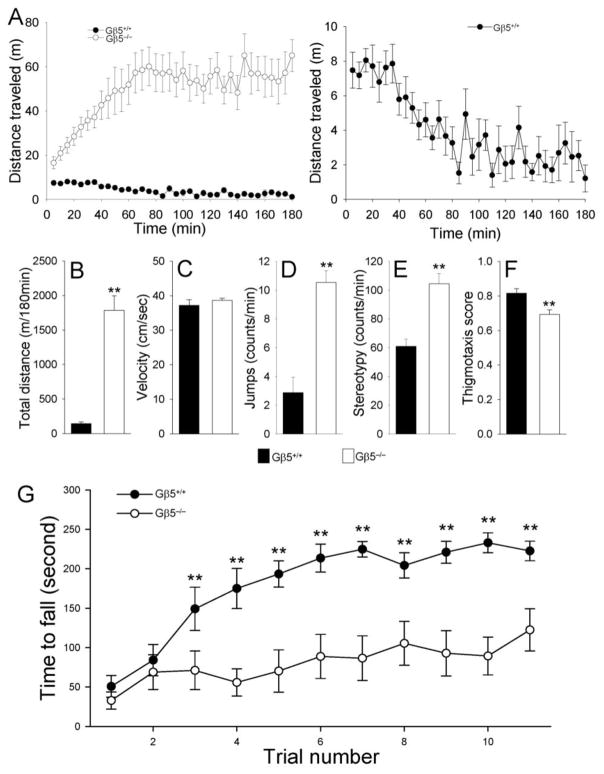Figure 1. Gβ5−/− mice display dramatic hyperactivity, impaired habituation to novel environment and marked motor learning deficits.
Behavior of Gβ5−/−mice and their wild-type littermates (Gβ5+/+) in the open field chamber (A-F). A, Gβ5−/−mice display paradoxical habituation to the novel environment and severe hyperactivity. ANOVA analysis revealed a significant habituation effect for both wild type (F(10,35) = 129.9, p < 0.001) and Gβ5−/− (F(10,35) = 83.8, p < 0.001). However, the direction of the effect was opposite: Gβ5+/+ mice showed progressive decrease in activity during habituation, whereas the activity of Gβ5−/− mice increased. This difference in the habituation behavior was found significant by two-way ANOVA analysis (genotype x trial interaction, F(35, 720) = 3.14, p < 0.001). Right panel shows habituation behavior of wild-type subjects on magnified scale. B-F, Quantification of typical mouse behavioral traits in the open field. Statistical significance of differences was analyzed using pair-wise comparison by Student’s t-test; **p < 0.01 (n=11/group). G, Gβ5−/−mice exhibit severe deficits in motor learning behavior in rotarod test. A two-way ANOVA analysis revealed significant effect of trial for both groups of mice (F(10,187) = 7.38, p < 0.001), genotype (F(1,187) = 120.25, p < 0.001) and interaction between trial and genotype (F(10,187) = 2.248, p < 0.05). Pairwise comparions by post hoc Tukey’s test revealed that Gβ5−/−mice had a deficit in rotarod performance from the third trial (**, p < 0.01).

